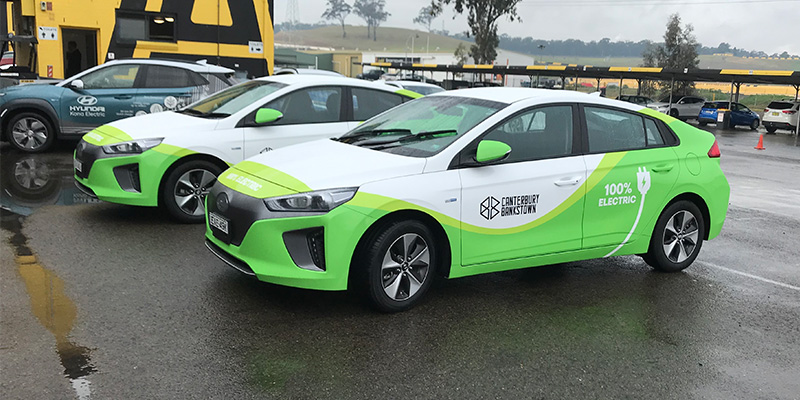
Canterbury Bankstown Council was one such trendsetter that was featured as a leader in the shift to EVs with their Charging Ahead project. Back in 2010, they started their EV journey with a discussion paper about adopting electric vehicles into their fleet. In 2018, they bought their first five electric vehicles and now, in 2021, their fleet has expanded to 18 vehicles.
Mark Thompson, Team Leader Fleet Management at Canterbury Bankstown Council, provided the NRMA with an update on the Charging Ahead project.
The process to transition to EVs started with the council’s Sustainability and Fleet teams making a case to the Executive Leadership team, with support from all departments. Once the leadership was on board, the Mayor gave the thumbs up too and started driving one of the EVs to show support.
“We started with the Hyundai IONIQ because it was the best option at the time,” says Thompson. “Now, we also have the Nissan Leaf and Tesla Model 3. They are available as pool cars from the Bankstown Civic Tower and Campsie offices.”
The next step was an education program for the staff and community. This was a key part of the rollout. A multi-stage campaign was launched so that staff could test drive the vehicles and get training on how to access them via the digital fleet car booking system. The Corporate Development team and the Sustainable Future Unit implemented vehicle branding to make the cars more visible.

Infrastructure was also part of the Charging Ahead project. The council brought in an external electrical contractor to provide a turnkey charging solution, which included new distribution boards, cabling, and charging units.
And because you can’t charge your car if there’s nowhere to park it, car spaces near the charging stations were marked off as dedicated EV parking spots. The council plans to increase these spaces as more electric vehicles are added to the fleet.
Taking pioneering steps is nothing new for the council. In 2019, they were one of the first to place an order for a Hino truck, fitted with an electric drive train by SEA Electric and a Bucher Municipal body. When it arrives in late 2021, a garbage truck will be the first heavy electric vehicle to join the fleet.
Since the initial launch, the Fleet team now considers the option of an EV each time a vehicle needs replacing. With limited choices available at the moment, they’ve gotten creative and converted four Hyundai IONIQs into panel vans for the Works and Project team.
This involved removing the rear seats and installing a cargo barrier and rubber mats. The vehicles only travel within the local government area, so range isn’t a concern. The bonus is that in this configuration, the council doesn’t need to pay Fringe Benefits Tax.
To maintain their 1,500 fleet vehicles, the council operates three workshops in collaboration with Hyundai and other manufacturers. Their EVs are serviced by technicians trained by the factory to handle the high voltage components and advanced electrical systems.
Thompson says there’s still much more to understand about running a fleet of electric vehicles beyond the initial purchase and setting up charging infrastructure. Fit-for-purpose considerations must also come into play in the early stages of EV ownership.
And it’s not just vehicles that can go green. Electricity is developing into an important power source that can be used for other fleet assets.
“We’re getting great feedback from the maintenance teams on the performance of electric blowers, chainsaws and other small plant items,” says Thompson.
“We’re looking at electric sweepers, which require their own charging infrastructure, so we can use what we’ve learnt from the EVs to roll them out quickly. Any opportunity where the council can see a benefit to introducing a new electric piece of equipment is being explored.”